Introduction
Automation has become a transformative force in business operations, offering practical solutions to the challenges faced by organizations. From streamlining processes to enhancing efficiency, automation unlocks a multitude of benefits. It empowers employees to redirect their focus from monotonous tasks to more strategic work, ultimately boosting overall productivity.
In this article, we will explore the importance of automating business processes and discuss how organizations can identify, prioritize, and implement automation effectively. We will also delve into the common challenges faced and provide insights on measuring automation success. Join us on this empowering journey as we uncover the transformative potential of automation in today’s dynamic business landscape.
Why Automate Business Processes
At the core of every successful business lies a intricate network of procedures that are essential for attaining goals such as customer contentment and profit optimization. Automating these processes not only streamlines operations but also unlocks a multitude of benefits. By embracing automation, companies can enhance efficiency, minimize errors, and boost overall productivity. Automation empowers employees to redirect their focus from monotonous, repetitive tasks to more strategic, impactful work.
Take Specsavers, for instance, a company with a global supply chain that manufactures the majority of lenses and frames sold in its stores worldwide. By creating customized operational procedures and internal technologies, Specsavers has addressed the distinct obstacles presented by its specialized position in optometry, where older devices frequently encounter difficulties with API integration and streamlined data transfer.
In another example, Delivery Hero, a leading local delivery platform, faced the issue of employees frequently being locked out of their accounts. The resolution procedure, which previously necessitated IT involvement and took an average of 35 minutes, was revolutionized through automation, greatly minimizing downtime and streamlining access recovery.
Business process management software is crucial for organizations seeking to analyze and optimize their business processes. Jira Work Management stands out as particularly effective for both startups and enterprises, enabling teams to scrutinize their workflows and identify areas for improvement.
Understanding the role of Robotic Process Automation (RPA) is essential. Automation technology utilizes software bots to perform actions such as data entry, transaction processing, and customer service interactions. The integration of RPA across various applications and platforms can release a significant amount of time for more critical activities. As cited by a specialist in the domain, ‘It’s in the linking of systems where you can genuinely be liberated from a wide range of tasks and let the mechanization do it for you.’
AI and the use of technology are transforming the environment of operational activities within organizations, and it’s crucial for organizations to take into account essential aspects such as data readiness, the interaction between human skills and digital assistants, IT prospects, and investment priorities. As we move forward into a time where mechanization is becoming more and more common, businesses are advised to stay informed and adapt to leverage the full potential of these transformative technologies.
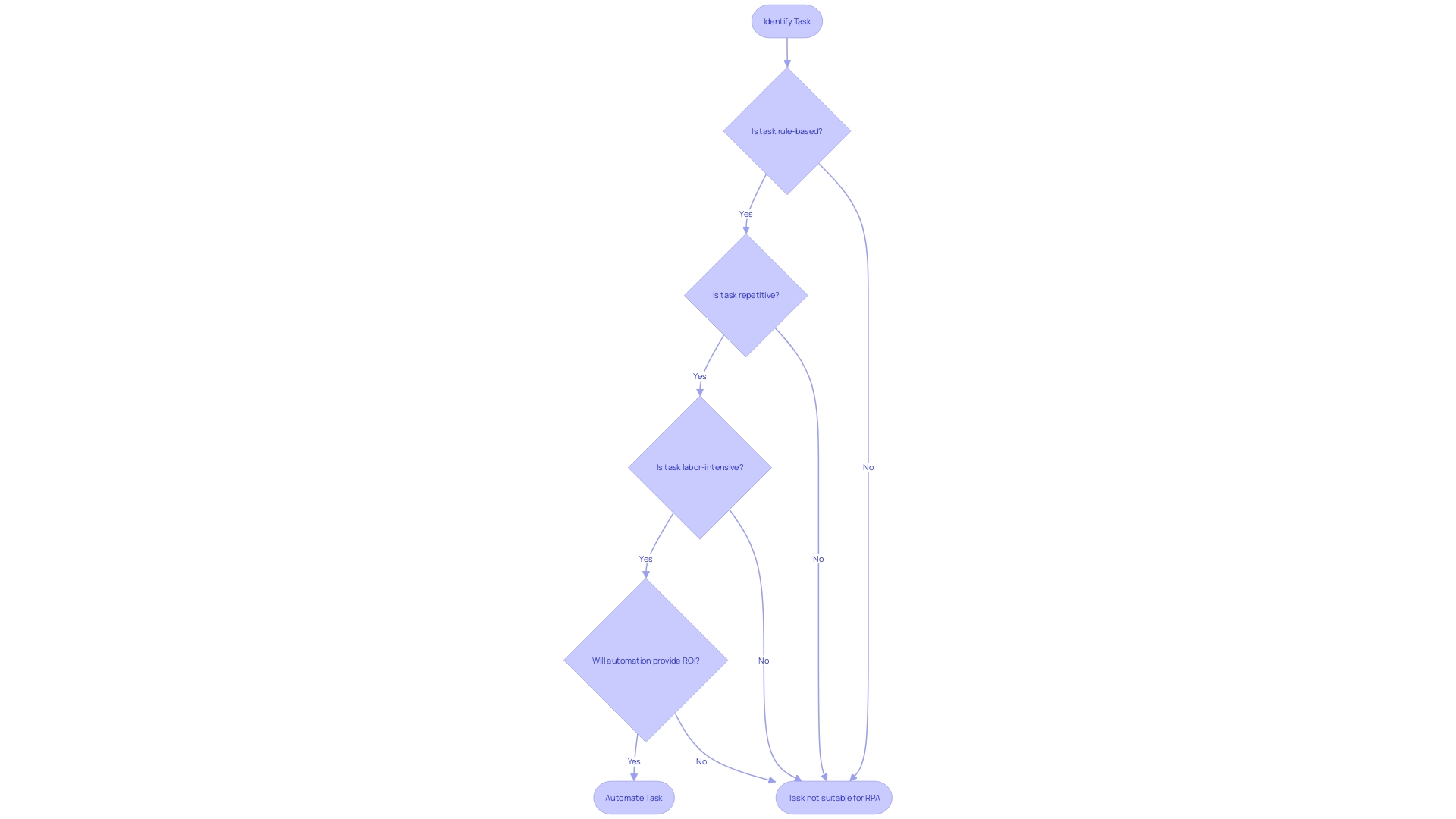
Identifying Processes to Automate
Comprehending the complexities of your company’s current procedures is the foundation of effective automation implementation. It’s about analyzing every step to measure its complexity, how frequently it’s performed, and its potential for improvement. This critical evaluation is not just about deploying technology, but also about refining workflows to ensure that they align with the organization’s strategic goals.
Business procedures, similar to a race, aim to transition from the starting line to the finish effectively and efficiently. Exploring the depths of these mechanisms enables a detailed comprehension of which elements necessitate greater focus. By charting these procedures, one can visualize the consecutive steps and identify potential bottlenecks or unnecessary phases that could be streamlined or automated. As a result, this allows organizations to concentrate on their main goals, such as maximizing profits and ensuring customer satisfaction, without the interference of repetitive activities.
One crucial stage in this journey is setting up a organized system for work procedures, a technique emphasized by specialists as a forerunner to mechanization. This framework serves as a blueprint, ensuring that crucial tasks receive priority and align with best practices. It also provides a transparent view of the workflow, allowing for effective monitoring and optimization.
The explosion in data collection and management tools, such as ERP and CRM systems, has provided organizations with a wealth of information that can guide their strategies for streamlining processes. These systems continuously gather digital records of employee activities, presenting an opportunity to leverage this data to organize work and automate workflows. The challenge lies in navigating the complexity of these systems to extract actionable insights that drive efficiency.
Furthermore, the reach of automated processes has expanded across diverse sectors, such as IT, finance, healthcare, and manufacturing, exemplifying its adaptability. For instance, workflow mechanization utilizes software applications and algorithms to eliminate the need for manual intervention in repetitive tasks, thus minimizing errors and enhancing overall productivity. This technological innovation is not limited to tech-savvy individuals; it’s equally accessible to non-technical staff, making it a universally beneficial tool.
As mechanization becomes progressively integrated in contemporary software development, the significance of choosing the appropriate solution for streamlining cannot be emphasized enough. Whether it’s a no-code, low-code, or high-code platform, the choice depends on the specific needs of the users, be they developers or non-technical product owners. It is crucial to take into account the kind of user and use cases to guarantee that the tool for mechanization is in line with the complexity requirements of the organization.
In summary, the selection and optimization of business processes for mechanization are not mere exercises in technology application but strategic decisions that can propel an organization towards achieving its core objectives with greater precision and efficiency.
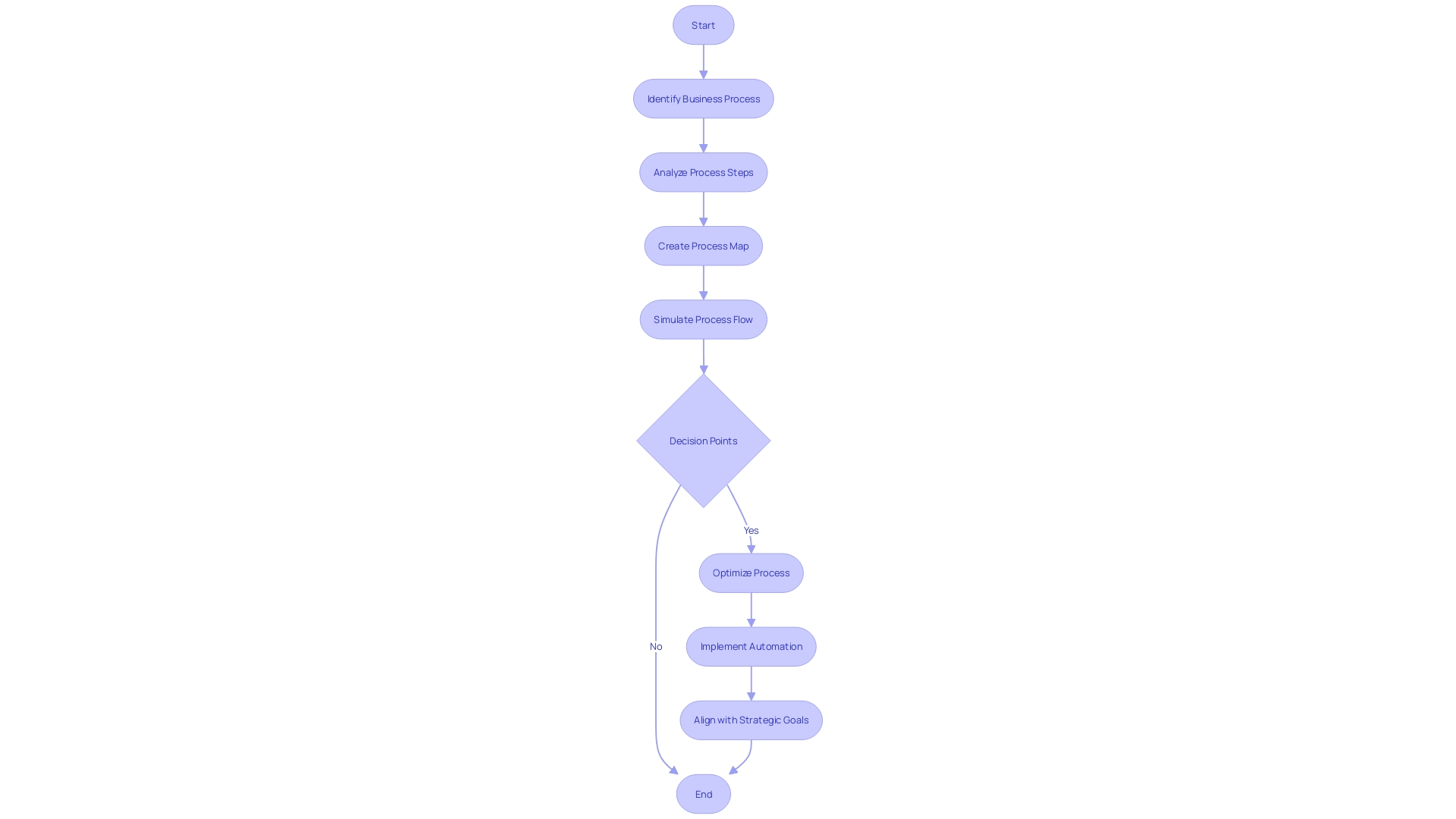
Defining Goals and Objectives for Automation
When starting on projects involving mechanization, it is crucial to have a clear vision of the desired outcomes to ensure that your efforts are not only significant but yield tangible progress. The Power Platform offers a compelling example where the evaluation of use cases for automated processes is critical. It requires a Tony Stark-esque attention to detail, evaluating the potential ROI and qualitative benefits to ensure that each digital initiative is not just a shiny new gadget but a strategic asset that enhances efficiency and aligns with your business goals.
Consider the meticulous planning that goes into an AI requirements agent, aimed at streamlining requirements gathering to free up time for project managers and developers. This type of tool demonstrates how the use of technology can revolutionize the start of projects, resulting in a more seamless and effective development journey. It’s about having a clear product vision, understanding the target audience, and establishing concrete goals and user stories.
Moreover, integrating automation with existing tools and systems is a journey of transformation that unfolds in stages: digitization, digitalization, and digital transformation. Every stage progresses from the previous one, transforming information into digital formats, then modifying procedures to capitalize on this data, and ultimately, utilizing technology to generate value for different stakeholders. It’s a sophisticated dance of technology and process reengineering that positions humans to provide high-value expertise while machines handle the repetitive tasks.
The dedication to mechanization must be balanced with a realistic comprehension of progress, which is measured by real improvements in efficiency, customer satisfaction, revenue growth, and cost savings. According to Automation.com, keeping up with trends in the field of technology is crucial, particularly considering the recent progress in AI and digitalization. They highlight the importance of pre-emption, prevention, and optimization in managing resources like water, where demand is expected to surge by 30% by 2025.
Lastly, zone management principles remind us that ambitious visions need to be tempered with concrete plans and schedules. Toyota’s experience with Woven Planet underscores the importance of clear goals and diligent management. In the field of AI and mechanization, progress is determined by the measurable influence of your endeavors, debunking the myth that technology alone is the solution. Instead, it is the synergy of technology with human and cultural changes that drives a successful transformation.
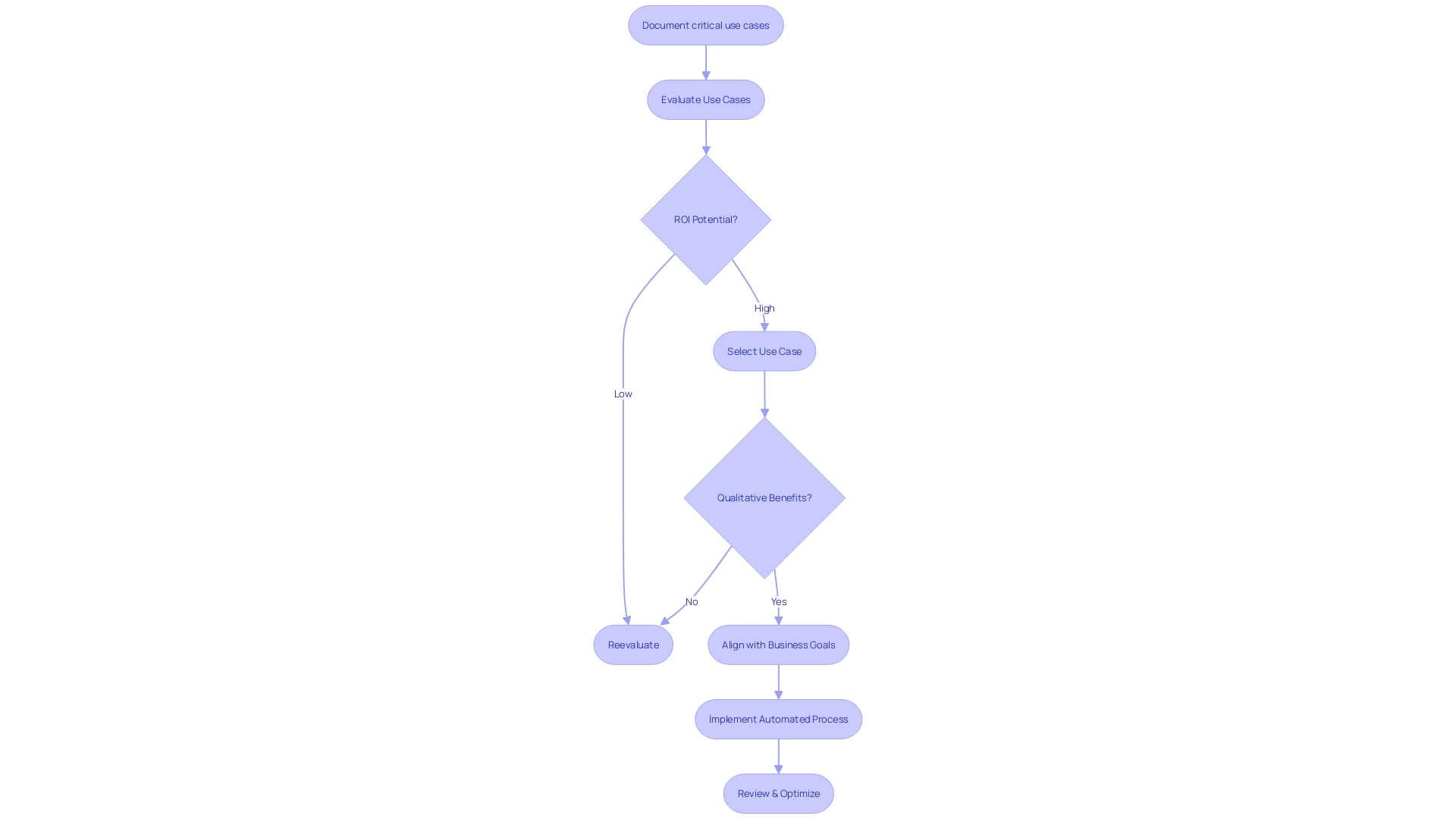
Mapping and Analyzing Current Processes
Mapping and analyzing current procedures is a crucial base for any automation endeavor. By outlining each step, input, output, and dependency, organizations gain a clear blueprint of how things currently operate. This clarity is paramount, as it reveals bottlenecks and inefficiencies ripe for enhancement. For instance, breaking down a core system into subsystems or modules can uncover how different user groups interact with each segment, exposing critical areas for improvement. As mentioned by Professor Hajo Reijers, comprehending these workflows is a milestone to the wider field of Process Science, which aims to enhance processes beyond the realm of business.
Diving into the functionalities and relationships between system components allows for a comprehensive view of operations. This overview is not just about technology stacks but also about how subsystems integrate with external systems. With the appropriate tools and methods in place, an organization can start to tackle more nuanced questions, transitioning from a descriptive to a predictive approach to data analysis. This change is a characteristic of an organization’s analytical advancement—a notion that emphasizes the need for thorough mapping of procedures before mechanization.
Incorporating process flowcharts further enhances this preliminary step, using universally recognized symbols to articulate the sequence of actions within a process clearly. This visual representation, combined with the functional requirements of the system, establishes the foundation for informed decision-making when selecting tools for streamlining processes. By addressing these aspects, leaders can move towards a more efficient operational model, ultimately improving productivity and mitigating issues that lead to employee burnout, as suggested by recent discourse in Process Science.
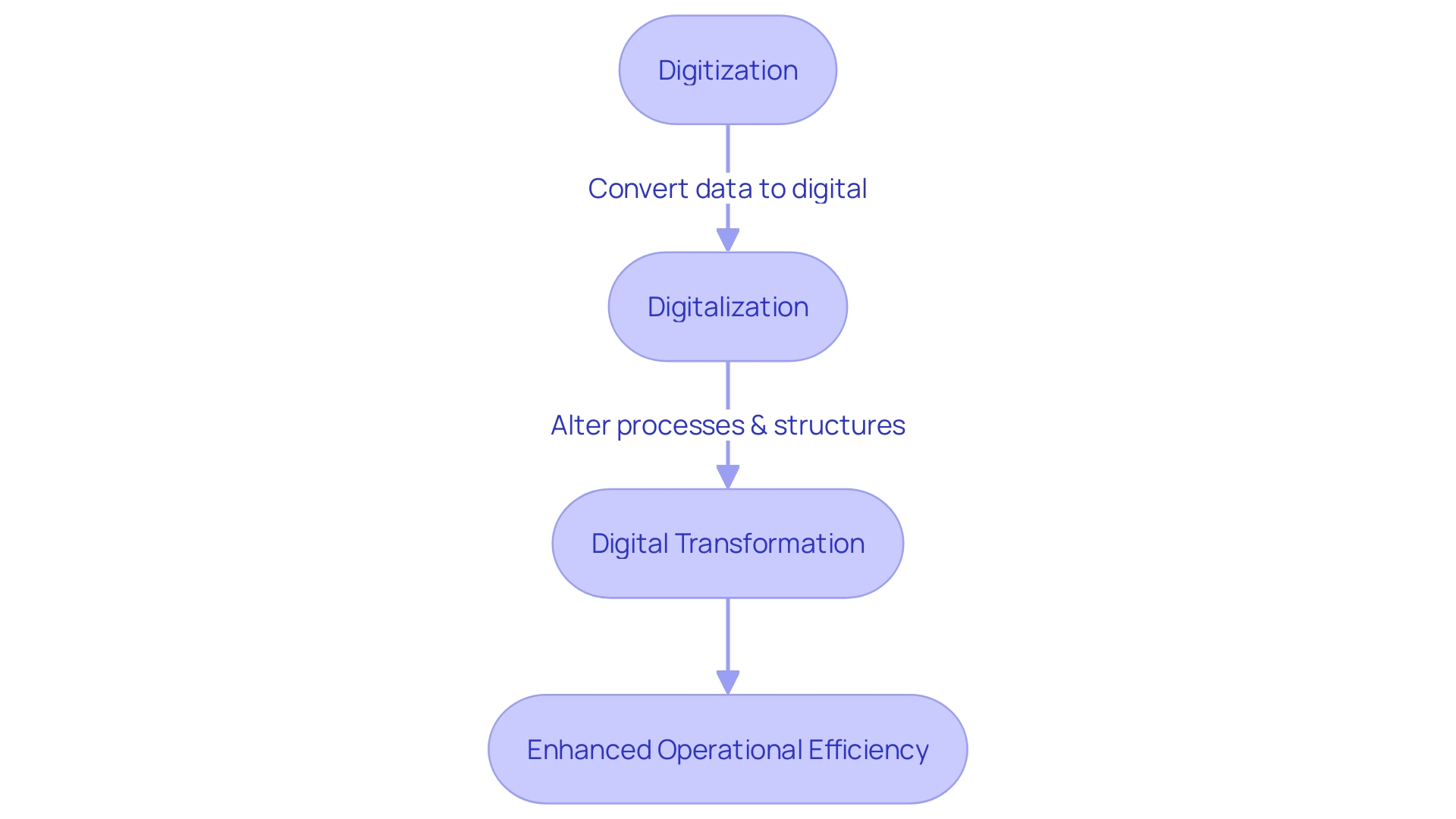
Prioritizing Tasks and Processes for Automation
Choosing which business operations to automate necessitates a strategic method, concentrating on the value and intricacy of each activity. Workflow technology can transform repetitive activities such as permissions management and notification dispatching, which are common in small to medium-sized enterprises, into streamlined processes. A report by Zapier indicates the prevalence of these activities, emphasizing the widespread opportunity for streamlining to enhance productivity.
The Musk manufacturing and management philosophy, which emphasizes questioning every requirement, can be applied to the prioritization of tasks for streamlining processes. This mindset ensures that only processes that genuinely require mechanization are targeted, thereby optimizing resource allocation.
Additionally, the interlinked qualities of swiftness, effectiveness, hazard decrease, and expertise enhancement are crucial for triumphant IT. Improving one often positively affects the others, creating a virtuous cycle that enhances overall operational effectiveness. Implementing a comprehensive method for IT streamlining, rather than fragmented remedies, can offer a cohesive strategy that aligns with organizational objectives.
The potential of AI and mechanization is also underscored by predictions from the World Economic Forum and Accenture, indicating that IT, finance, and customer sales will experience significant changes due to AI’s ability to automate or significantly alter tasks like performance monitoring, data collection, and documentation.
In addition, the employment of advanced intelligence and analysis by companies like OODA showcases the wider effects of AI and technology in fields such as security and defense, as evident in the changing battlefield in Ukraine and the utilization of surveillance robots by Israel.
Another viewpoint arises from the healthcare industry, where the use of technology is considered a tool for clinicians to concentrate on high-impact activities, as per the A.D.D. approach, which values time as a critical resource.
The incorporation of AI and mechanization into operational processes is not just about improving efficiency but also about redefining jobs, giving professionals the opportunity to concentrate on more innovative and impactful work. As the landscape of mechanization continues to evolve, organizations must consider both the immediate benefits and the long-term strategic implications of their mechanization choices.
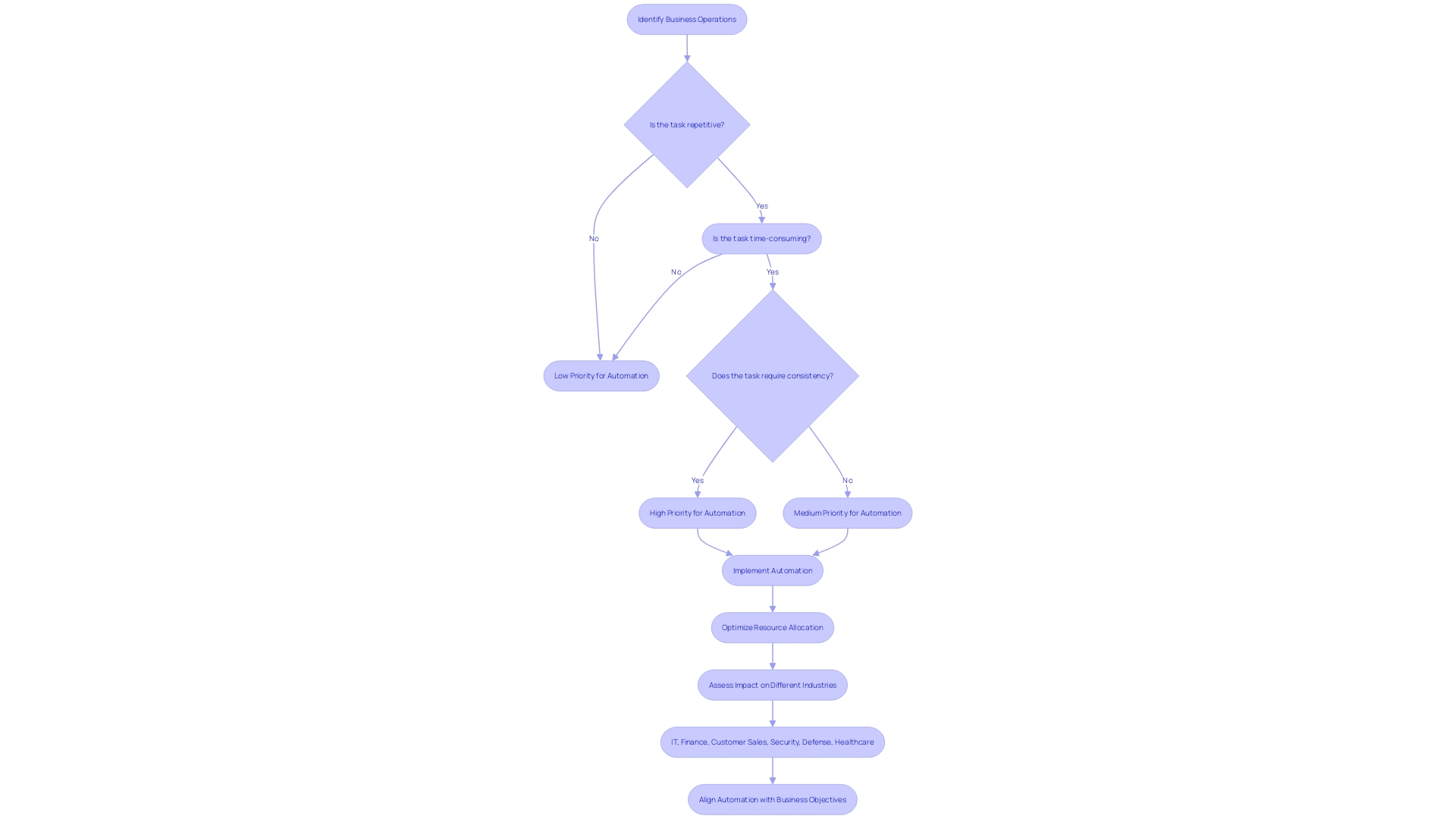
Identifying Tasks that Can Be Automated
Utilizing the potential of mechanization can be a substantial benefit for enterprises seeking to optimize their processes. When deciding which activities to automate, it’s crucial to identify those that are repetitive, rule-based, and time-intensive. This not only aligns with the principles of workflow mechanizationâwhich leverages technology to automate and orchestrate complex business processesâbut also ensures that the investment in mechanization yields substantial efficiency gains and productivity enhancements.
To pinpoint tasks ready for mechanization, organizations can utilize a three-step approach. At first, divide work activities into basic units to be managed by a single agent, ensuring each assignment involves a single action and yields a clear outcome. Afterwards, evaluate the automation potential of each assignment using a Task Automation Index, which assesses factors such as standardization of inputs, defined rules, repetitiveness, data dependence, and output objectivity. Finally, finish a specification template, which examines 16 critical components, acting as a comprehensive checklist for choosing or tailoring the most appropriate AI solution for workflow integration.
Studies suggest that workers using large language models have experienced productivity improvements between 8% and 36%. This indicates a significant potential for enterprises to leverage AI for operational efficiency. In addition, it’s vital to consider the economic factors of building and deploying automated systems. Studies on computer vision applications indicate that given the current expenses, only a portion of tasks linked to employee salaries would be financially appealing to mechanize, indicating the necessity for a prudent method to decisions regarding mechanization.
Integrating mechanization into your operations is not just about the technology; it’s about comprehending the intricacies of your business’s workflow. For instance, a personal tutor system utilized in the Department of Electronic & Electrical Engineering was improved by mechanizing the recording of attendance and student comments, demonstrating the practical effect of focused mechanization. Similarly, a company’s product development process can be streamlined by automating stage-gate processes, provided that the input rate is consistent.
In summary, when organizations embark on the journey of implementing automated processes, it is crucial to carefully assess and select tasks that align with the capabilities of AI and tools for mechanization. By doing so, businesses can not only improve operational efficiency but also create a more dynamic and productive work environment.
Choosing the Right Automation Tools and Technologies
Exploring the realm of technological advancements necessitates a strategic method to guarantee that the tools you choose are not only at the forefront, but also suitable for the specific requirements of your company. Whether it’s utilizing Robotic Process Automation (RPA) to streamline repetitive tasks, deploying Artificial Intelligence (AI) to enable complex decision-making, or leveraging Machine Learning (ML) for predictive analytics, the selection procedure is pivotal.
Start by establishing clear objectives for your automation initiatives. Ask yourself which aspects of your web, mobile, or desktop applications need enhancement. Identify the operating systems that are essential to your testing procedures. This clarity in purpose steers you toward the right set of tools.
Taking note from the NHS’s approach to technology adoption, we understand the importance of an initial assessment. A digital-assurance process ensures that any new technology is secure, appropriate, and adds value rather than duplicates existing solutions. Drawing from their experience, it’s evident that often, the resources sought are already within the organization, lying untapped and unrecognized. This revelation underlines the necessity of thoroughly understanding one’s existing capabilities before seeking new technologies.
As seen in the top articles from Automation.com, keeping up with trends like IoT and the changing scenery of technology is crucial. In today’s swiftly changing environment, knowledge of current advancements in AI, ML, and digitalization is invaluable for making informed decisions.
Organizations that have effectively incorporated AI, as shown by statistics from Canadian enterprises, observe a multitude of applications across various industries. From enhancing customer experiences with chatbots to refining healthcare predictions, AI is revolutionizing the way goods are produced and services delivered.
In the end, remember that choosing the suitable mechanization tools is not just about the technology itself. It’s about aligning these tools with your objectives to achieve speed, efficiency, risk reduction, and the cultivation of the necessary skills and practices. By adhering to a unified strategy, you can ensure that your efforts in streamlining processes are not scattered but are driving your organization towards cohesive and sustainable growth.
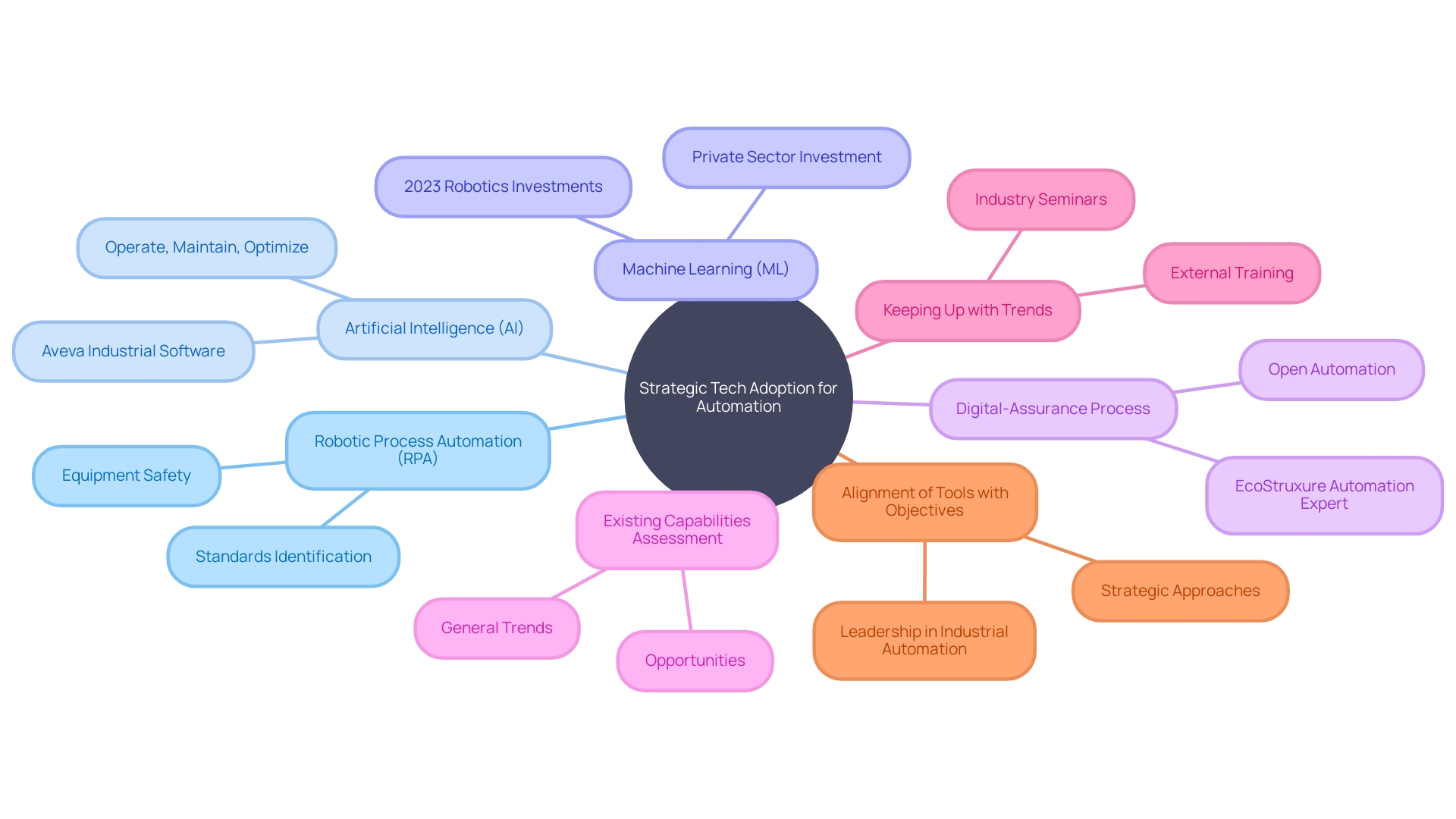
Designing and Implementing Automated Workflows
Creating and executing automated workflows is a transformative measure for enterprises seeking to improve efficiency. Workflow automation harnesses technology to automate complex business processes, diminish manual input, and minimize human error. By using software applications, algorithms, and predefined rules, it automates repetitive activities and promotes seamless communication, orchestrating the flow of work and enhancing organizational efficiency.
The implementation of automated workflows should begin with a well-defined structure, which serves as the backbone for managing work, even when manual stages are present. This framework is crucial for monitoring progress, prioritizing important activities, and aligning with best practices. It also aids in identifying and eliminating unnecessary tasks that could distract teams or consume valuable time. To avoid feeling overwhelmed, it’s advisable to start with automating one process at a time.
Integration with existing systems is crucial for maintaining a seamless operational flow. As enterprises evolve, IT infrastructures can become complex, making integration challenging. Nonetheless, it is imperative to ensure that automated workflows can be incorporated into current systems without causing disruptions.
Scalability and flexibility are also key aspects of successful workflow automation. They ensure that as the company expands, the automated processes can adapt and expand accordingly. This adaptability is vital for sustaining long-term efficiency gains.
A report by Zapier reveals that almost all employees in smaller businesses participate in repetitive activities, such as sending notifications or managing permissions. By automating these activities, workers can concentrate on more valuable tasks, ultimately improving job satisfaction and operational productivity.
In the realm of DevOps, the culture of collaboration and mechanization is central. DevOps is not merely about tools; it is a mindset that prioritizes shared responsibility, transparency, and continuous improvement, with automation being the linchpin that streamlines tasks and ensures consistency across various stages of development.
The synergy between design and engineering plays a significant role in creating automated workflows that are not only efficient but also user-friendly. The design starts with questioning and creating meaning, while engineering emphasizes systematization and technical solutions that are simple, scalable, and future-proof.
Testing and Fine-Tuning Automated Processes
To guarantee that automated procedures fulfill their commitment of enhanced effectiveness and productivity, thorough testing and continuous improvement are crucial. Markos Fragkakis, a Staff Engineer at Workable, shares insights from his experience enhancing their Continuous Integration (CI) procedures. Starting with an overview of their initial setup, he outlines the journey through setting requirements, conducting research, and experimenting with proof of concepts. This culminated in an implementation phase rich with strategic decisions, providing valuable lessons for others looking to improve their automated systems.
In the world of digital marketing, mechanization has transformed the way content is generated. For example, automating the creation of varied ad assets for a campaign involves numerous combinations of aspect ratios, sizes, and styling elements. This complexity is magnified when internationalization is considered. By automating one step at a time, the process becomes more manageable and efficient.
The transition from manual to automated testing is a strategic move to keep up with the speed of software development. Automation excels in repetitive, time-consuming tests such as regression, performance, and load testing. As the World Quality Report indicates, the movement towards mechanization and shift-left strategies has been a focus for organizations striving for shorter and higher quality life cycles.
While AI in test is progressing, it still serves as a complementary tool to human expertise. AI offers objective analysis, while humans excel at subjective judgment, understanding nuances, and detecting specific requirements and edge cases. Human testers can then focus on more strategic challenges. According to Michael Larsen, who has more than 30 years of experience, now is a great opportunity to mechanize software testing procedures to match the industry’s need for speed and effectiveness.
In summary, a well-defined test execution strategy is crucial for understanding gaps early and preventing them during implementation. This method not only saves time and costs but also ensures that automated procedures are continuously improved to maintain their efficiency over time. Such strategic refinement, bolstered by the integration of AI, promises a future where software quality reaches new heights.
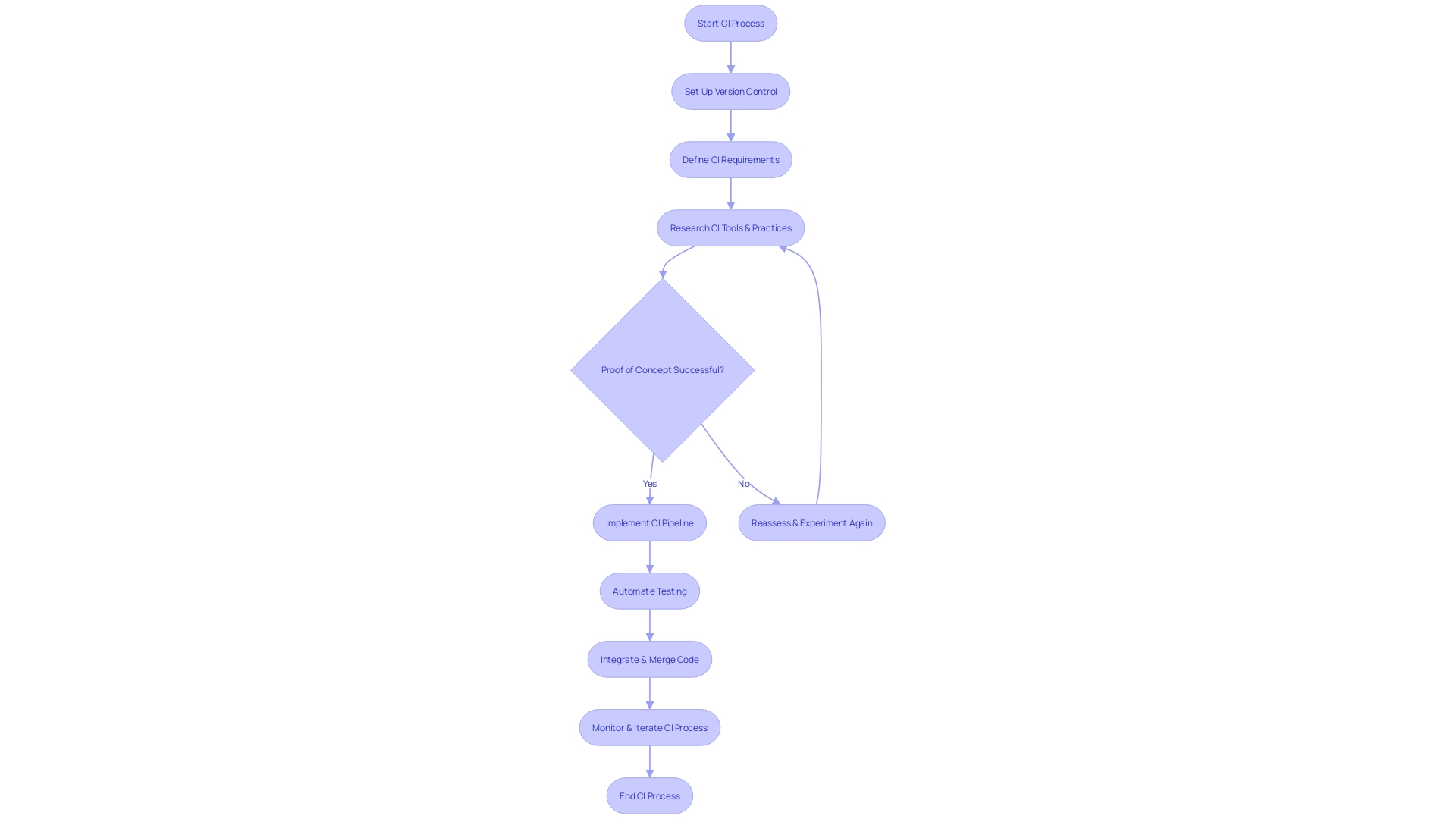
Training Employees on New Automated Processes
Workflow streamlining utilizes technology to simplify intricate operational procedures, reducing the need for manual labor and minimizing human mistakes, thus enhancing productivity. It utilizes software, algorithms, and established rules to automate routine activities, guaranteeing seamless communication, and overseeing work processes in an organization. Usually, organizations that encounter recurring activities, like dispatching notifications or handling authorizations, can greatly gain from adopting workflow automation. A study by Zapier indicates that almost all employees in smaller enterprises participate in such repetitive tasks, and automating them can enhance job satisfaction.
When it comes to incorporating these automated procedures, it’s essential that employees are well-trained and supported throughout the transition. For instance, the digital payment solutions provider Nets revamped how they onboard new employees, resulting in noticeable improvements. This underscores the value of effective training strategies and addressing staff apprehensions, encouraging a culture that embraces ongoing learning and refinement.
Moreover, companies in the financial sector often need to adhere to strict international regulations, such as fraud prevention and Anti-Money Laundering, which necessitates comprehensive training. Instructional Designer Karmela PeÄek highlights the importance of presenting technical data in engaging ways to motivate self-guided learning among users.
However, introducing new technologies in large organizations can be challenging. The resistance to change can stem from various factors, including technical debt—when an organization’s existing tech infrastructure isn’t compatible with new technologies. This can make it risky to modify fundamental business procedures. For example, when a small town register of deeds transitioned from paper to a computer system, the clerks had to adjust to losing their manual stamping process, which was a significant part of their work identity.
USAA’s chief information officer, Amala Duggirala, outlines a strategic approach to AI training for their 37,000 employees, focusing on governance, risk management, and role-specific educational courses. Such targeted training can lead to remarkable productivity gains; a report reveals that just saving 11 minutes per day can make employees appreciate the value of AI, with the most efficient users saving up to 30 minutes per day.
Understanding the important factors for AI and the use of technology is essential. A comprehensive plan consisting of 11 steps can assist organizations in maximizing smart technology, enabling them to make appropriate investments and ready their staff, resulting in tangible effects and enhanced operational effectiveness.
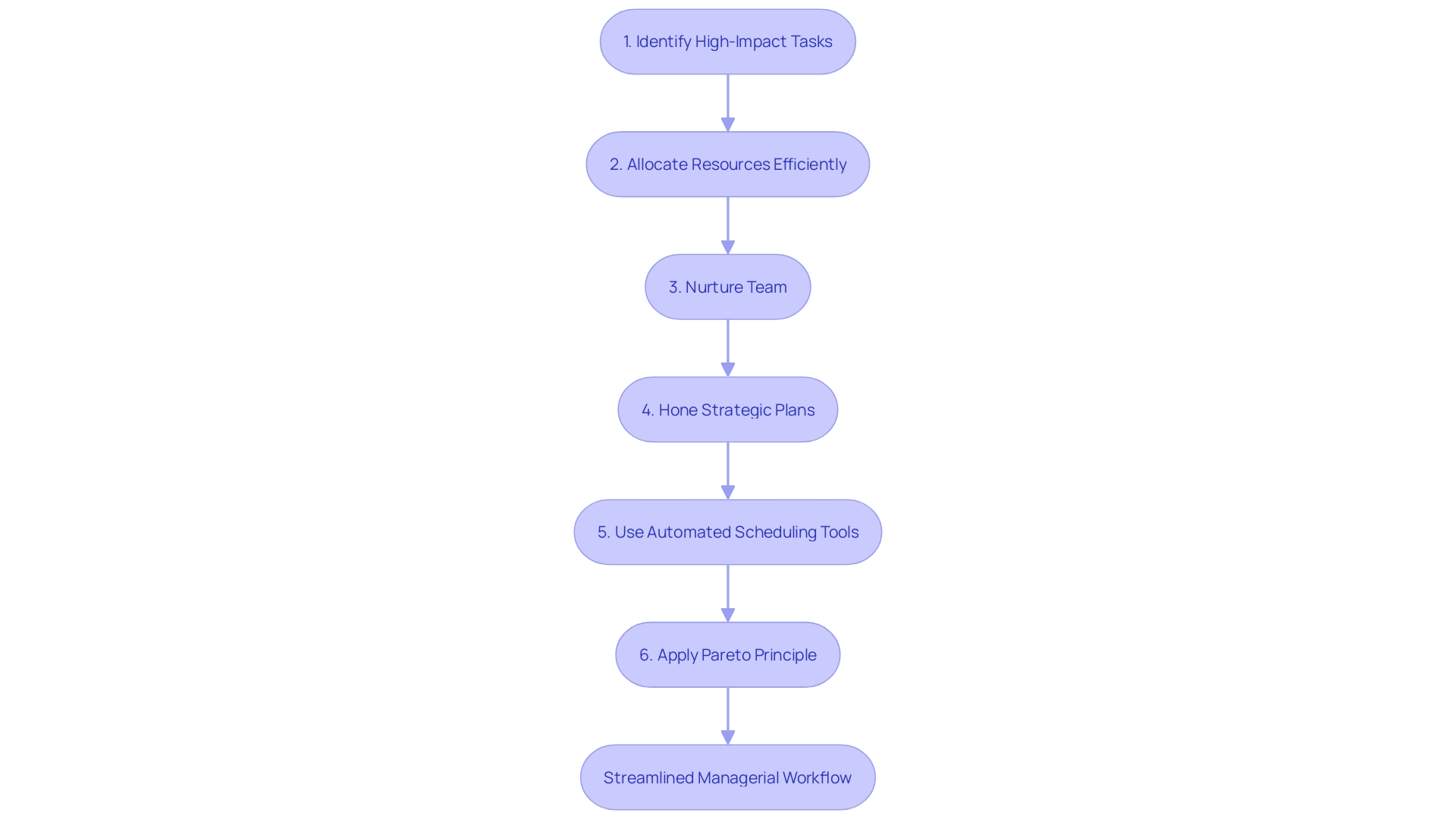
Common Challenges and Solutions in Process Automation
As businesses explore the realm of process streamlining, they often face a set of common challenges. Addressing these issues effectively is crucial for a smooth transition to automated systems. One pivotal aspect is the management of change. Employees may show reluctance towards the use of technology due to fear of the unfamiliar or concerns about job security. Nevertheless, when mechanization is integrated thoughtfully, it can enhance creativity and productivity, enabling employees to engage more deeply with problem-solving tasks. This can be observed in the transformation within the Department of Electronic & Electrical Engineering, where the use of technology for personal tutorial records improved operational efficiency.
Furthermore, upholding data security and guaranteeing compliance are of utmost importance in the process of automated tasks. An example of this is St. James Winery, which adopted automated processes to solidify its position as a top winery, without sacrificing the quality that results from their rigorous standards. Automation technology, particularly RPA (Robotic Process Automation), is a game-changer that enables software bots to perform tasks ranging from data entry to customer interactions, streamlining operations across various applications.
The newest progressions in mechanization, combined with AI, offer chances for unparalleled efficiency and innovation while navigating the intricate dynamics of technology and human roles. Yet, these advancements are not without their challenges. The key is to gain meaningful traction with technology, ensuring its effective leverage. The success of digital transformation initiatives often hinges not on technology itself, which has evolved remarkably over the past decades, but on the strategic implementation and adoption processes.
To this end, understanding the user experience (UX) is vital. User interviews can provide deep insights into the needs and expectations of those interacting with new systems, informing better design and integration of automated solutions. By adopting this user-focused strategy, leaders in the industry can overcome pushback, improve security, and guarantee adherence, paving the way to a successful implementation. The significance of such a method is emphasized by the experiences of professionals in the field, whose job satisfaction and career intentions mirror the influence of well-implemented projects on the workforce.
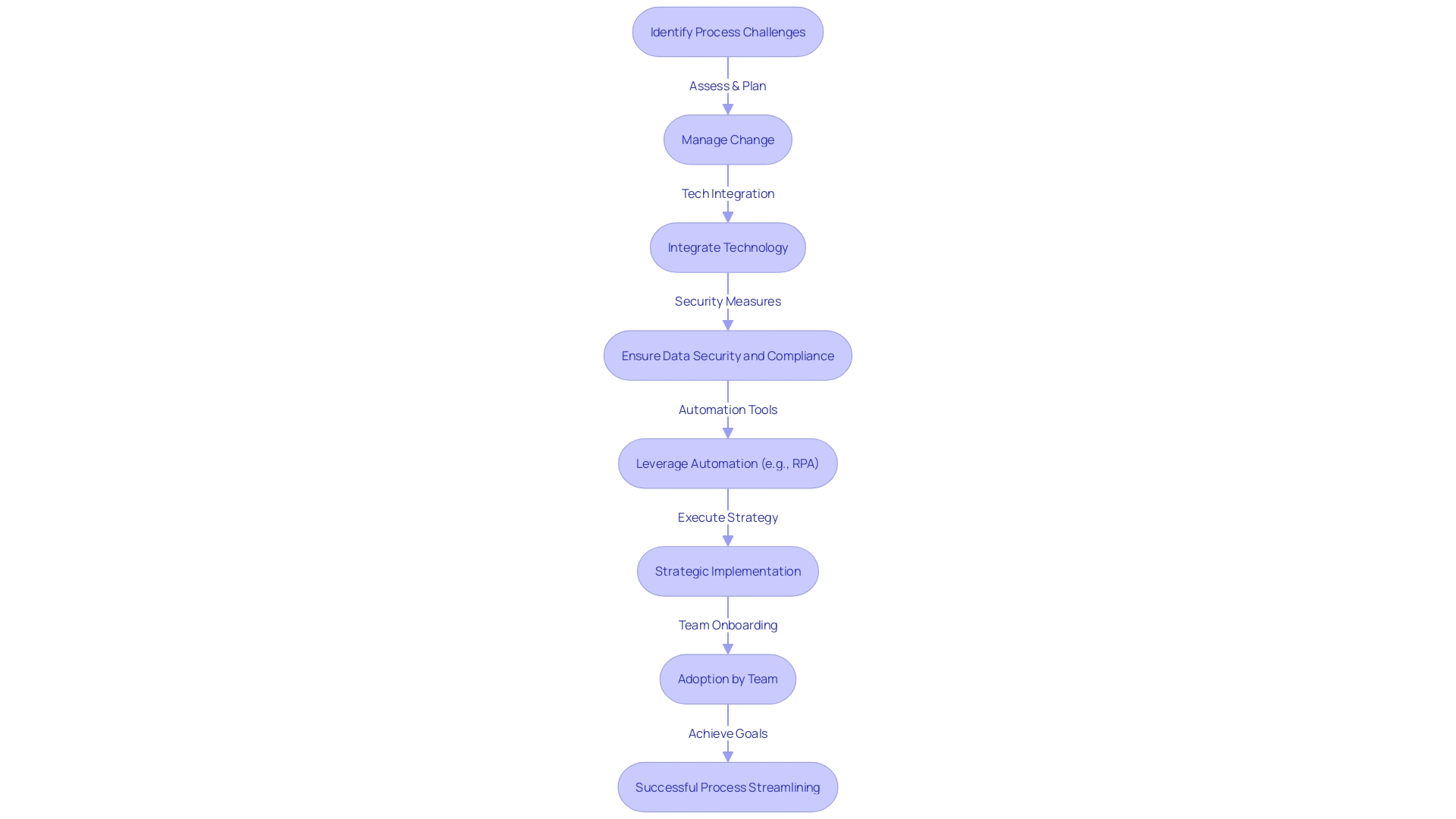
Measuring and Monitoring Automation Success
Comprehending the complete extent of the influence of automated processes on business operations is essential for any organization. It involves closely monitoring the effectiveness of tools and strategies for automatic processes to ensure they are delivering the anticipated benefits. Metrics such as time savings, increased productivity, and improved customer satisfaction are central to evaluating success. Consider the case of Louvre Hotels Group, who, through the integration of RobosizeME’s technology, reduced the time spent on rate code headers by 188 hours per month, and saved an extra 386 hours on rate code details. These time savings translate into staff being able to focus on more strategic tasks that can further enhance operational efficiency.
Similarly, the Hiscox services story illustrates how the use of technology can also result in quicker response times and increased customer satisfactionâa crucial measure in the current dynamic business landscape. Hiscox’s automated solution reduced the repetitive workload by 28%, ultimately benefiting both customers and employees. Moreover, Specsavers’ approach to addressing the unique challenges of their industry with custom-made technology solutions underscores the importance of continuous monitoring and adapting technology to fit specific operational needs.
The transformative potential of mechanization is further supported by industry-wide trends. A study of more than 150 manufacturing experts showed that 60% intend to embrace mechanization, demonstrating a notable change towards these technologies to improve effectiveness and durability. However, the report also mentions the different levels of mechanization across organizations, indicating that a universal solution is not feasible. Instead, organizations must identify the most valuable processes for mechanization, taking into account their unique operational structures and objectives.
The fate of mechanization also depends on the strategic utilization of artificial intelligence (AI) across various sectors. As organizations increasingly turn to AI to automate production and service delivery, the distinction between roles suited for humans and those best performed by digital assistants becomes more pronounced. This advancement is not without its challenges; professionals committed to technology projects report a need for ongoing skill development to keep pace with the rapidly changing environment.
In conclusion, effective mechanization is not only about implementing technology—it’s about incorporating it in a manner that aligns with organizational objectives, consistently enhancing procedures, and ensuring the workforce is capable of utilizing these tools efficiently. By staying aware of these important factors, businesses can utilize the complete capabilities of technology to drive their operations forward.
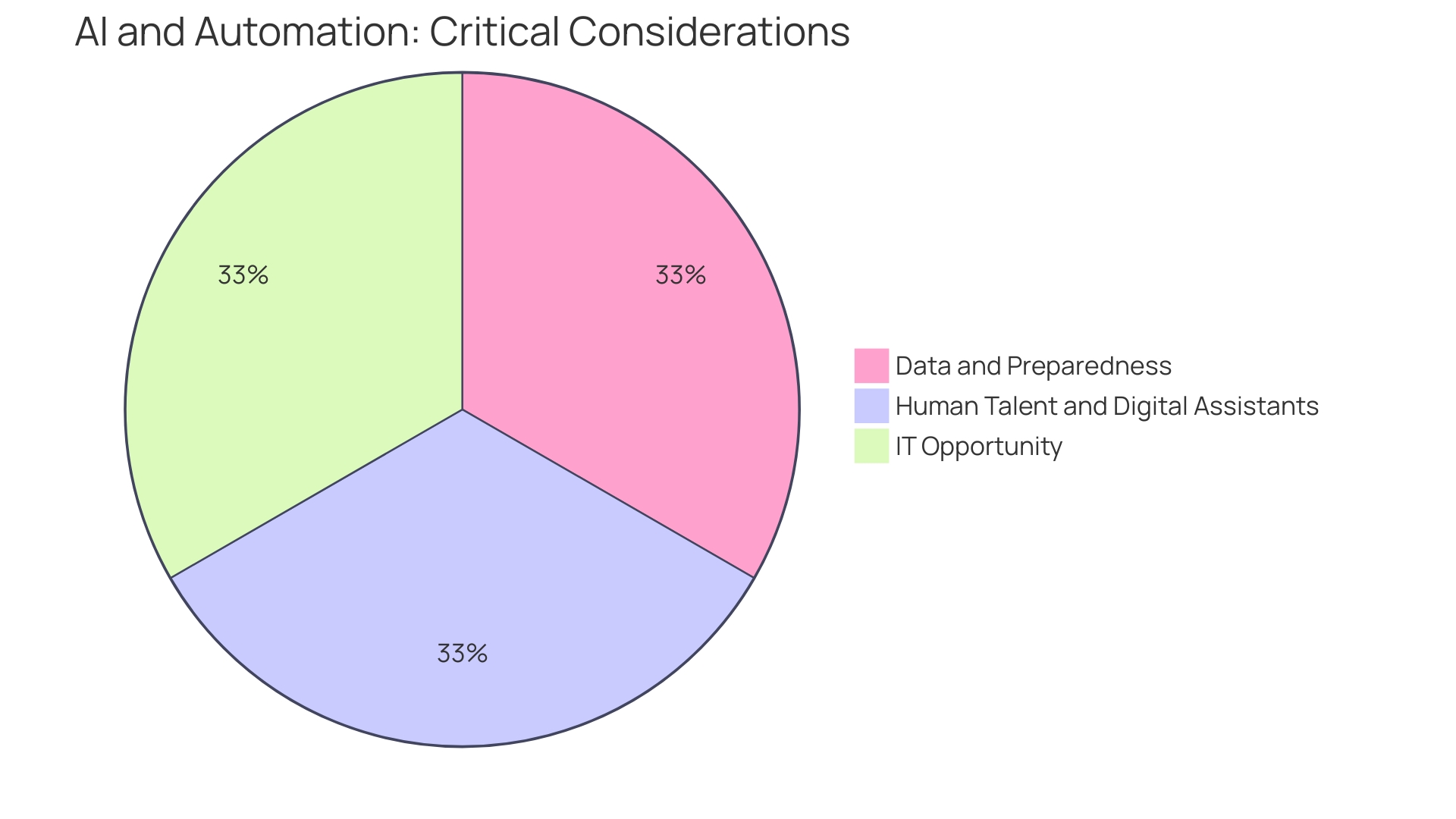
Continuous Improvement and Optimization
Automation isn’t just a set-it-and-forget-it solution; it’s a dynamic sequence that thrives on perpetual enhancement. Within the advancing narrative of successful mechanization, companies like Europris in Norway are sterling examples of how a continuous journey of enhancement can lead to remarkable operational efficiencies. Europris began by consolidating six warehouses into one automated logistics hub, a move that has since propelled them into an era of streamlined processes and productivity.
Boeing’s commitment to learning and applying insights across its operations underscores the importance of a culture that embraces iterative learning and shared expertise. This approach aligns with the principles of DevOps, which integrates a variety of practices, from continuous integration to monitoring, to refine the software development life cycle.
Workflow automation stands as a beacon for companies overwhelmed with monotonous responsibilities. Leveraging algorithms and predefined rules, businesses are turning to technology to orchestrate their workflows, a movement supported by statistics that nearly all workers in small businesses encounter such tasks.
Elon Musk’s approach to busting bureaucracy by questioning every requirement with the name of the person responsible for it exemplifies the mindset needed for continuous process improvement. It’s a reminder that each step in mechanization should be scrutinized for its necessity and efficiency.
In the domain of mechanization, it’s not only about implementing technology; it’s about fostering a mentality of innovation, where questioning, refining, and improving are part of the daily routine. This is the essence of a successful automation journey – a path marked by ongoing evaluation, insightful feedback, and an unwavering commitment to progress.
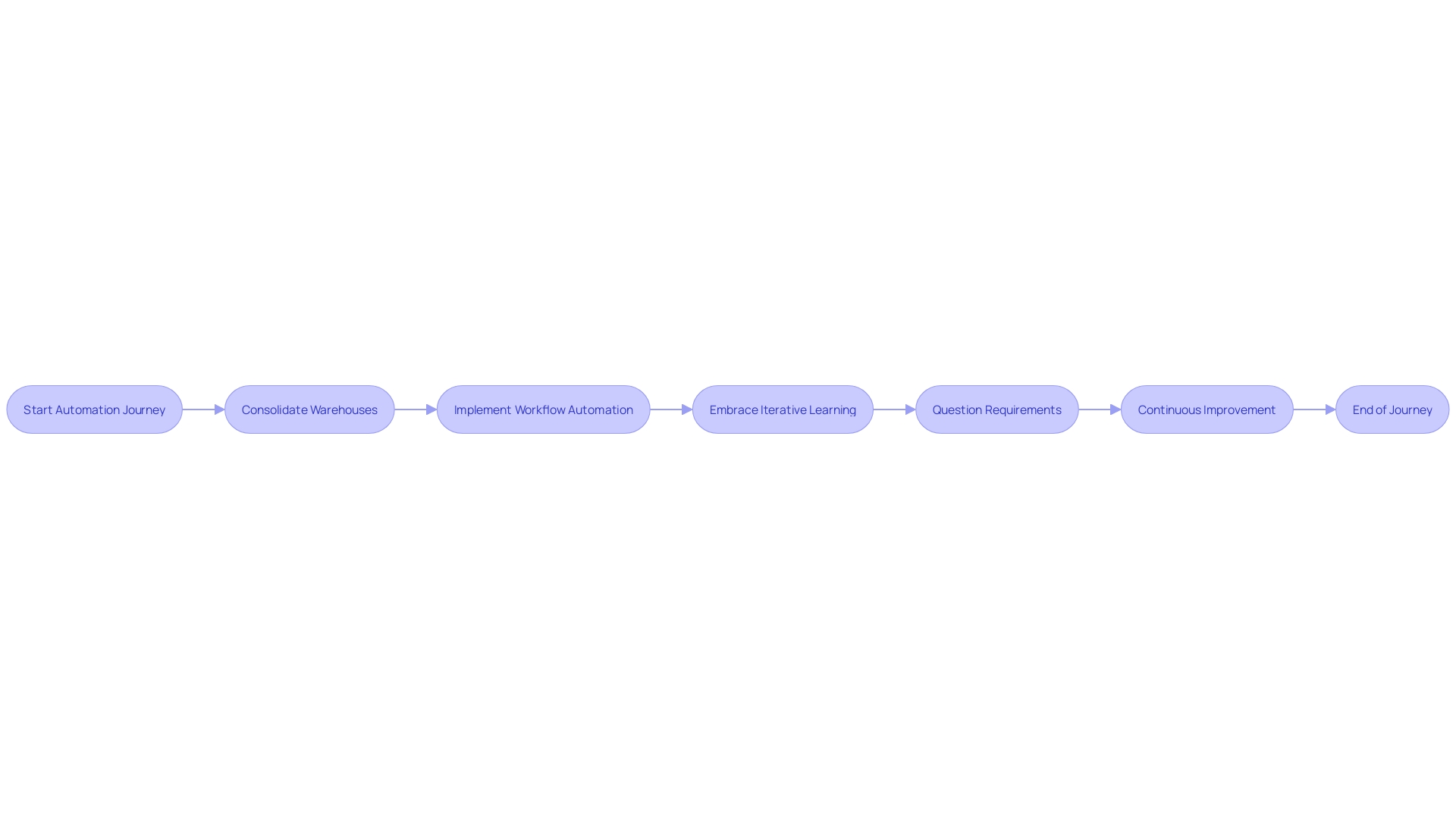
Conclusion
Automation is a transformative force in business operations, streamlining processes and boosting productivity. By identifying and prioritizing processes for automation, organizations can optimize efficiency and align with strategic goals. Choosing the right automation tools and technologies is crucial for successful implementation, while designing and implementing automated workflows enhance operational efficiency.
Testing and fine-tuning processes ensure their effectiveness, and training employees facilitates successful integration. Overcoming common challenges, such as managing change and ensuring data security, is essential for automation success. Measuring and monitoring automation’s impact through metrics like time savings and customer satisfaction is key.
Continuous improvement and optimization drive long-term success, fostering a culture of innovation and refining the automation journey. In conclusion, automation empowers organizations to overcome challenges and unlock productivity, making it a vital tool in today’s dynamic business landscape.
Optimize your efficiency and align with strategic goals with our automation solutions.

